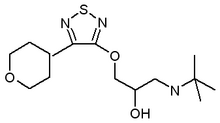VIENNA -- Guidelines are sorely needed for postpartum blood pressure management in women who experience hypertension during pregnancy, speakers said at the 14th World Congress of the International Society for the Study of Hypertension in Pregnancy.
"It's a problem we have very little guidance on and very little information about," said Jason Waugh, a senior lecturer in the reproductive science section at the University of Leicester, England. He presented one of three studies highlighting the knowledge gaps regarding postpartum diagnosis and treatment of women with pregnancies complicated by hypertension.
Determining whether a woman has underlying chronic hypertension can be difficult. Professional societies such as the ISSHP and the American College of Obstetricians and Gynecologists define chronic hypertension in pregnancy as that occurring prior to pregnancy or diagnosed before 20 weeks' gestation.
But a study of 501 women with hypertension at delivery suggests that the 20-week cutoff is not a reliable one. Instead, thorough postnatal follow-up is essential for accurate diagnosis, Mr. Waugh said.
The women were given preliminary diagnoses at the time of delivery. They subsequently performed home blood pressure monitoring--during which they followed a strict protocol for medication dosage reduction--for 1-8 weeks and were given final diagnoses. Those with persistent hypertension were referred to cardiovascular physicians for follow-up of more than 1 year, during which none of the final diagnoses changed.
The final diagnoses were preeclampsia in 36% (178 women), gestational hypertension in 42% (210), new diagnosis of chronic hypertension in 10% (51), and preexisting hypertension in 12% (49 with essential hypertension and 13 with renal disease).
Standard risk factors were poor predictors of underlying hypertension during pregnancy: Among the 51 women with chronic hypertension not diagnosed prior to pregnancy, only parity and gestation diagnosis were predictive of the final diagnosis, with smoking also showing a strong but nonsignificant trend.
Age, weight, and body mass index were not related to the final diagnosis, nor was antenatal suspicion of hypertension. Of the 28 women with blood pressures greater than 140/90 mm Hg at less than 20 weeks' gestation, 16 (57%) were later proved to have only gestational hypertension, while 12 (43%) were ultimately found to have chronic hypertension. On the flip side, this means that of the 51 women newly diagnosed with chronic hypertension postnatally, just 12, or 24%, had been hypertensive prior to 20 weeks.
"We must proceed with great caution in both clinical and research practice if a postnatal confirmation of blood pressure is not available following antenatal hypertension," Mr. Waugh remarked at the meeting.
Findings from another study suggest that gestational hypertension commonly persists post partum, particularly in older women.
Tiina Podymow, M.D., of the division of nephrology and hypertension at Weill Medical College, Cornell University, New York City, reviewed clinic charts of 29 women who developed gestational hypertension or preeclampsia; all had been normotensive prior to pregnancy.
The women had a mean age of 35 years. Hypertension had developed at gestational age 15-40 weeks, with 13 developing hypertension within 3 days of delivery and the remainder at 1-18 weeks prior to delivery. The average blood pressure was 161/94 mn Hg; the mean arterial pressure was 116. Eleven women were diagnosed with preeclampsia, and 25 were treated with antihypertensive drugs in the puerperium.
Blood pressure normalized between 0 and 4 weeks post partum in 12 women, between 5 and 12 weeks in 7, and between 13 and 20 weeks in 3. However, blood pressure remained elevated beyond 6 months in seven women, of whom one was found to have primary hyperaldosteronism. This finding suggests that secondary causes of hypertension should be considered in patients with hypertension persisting beyond 6 months, according to Dr. Podymow.
Age was a significant risk factor. The women who remained persistently hypertensive had a mean age of 41 years, compared with 33.5 years among those whose hypertension resolved, she reported.
And few data are available to guide physicians in treating these patients, Susan Sadeghi, M.D., of the University of British Columbia, Vancouver, reported in a poster presentation.
"Peak postpartum blood pressure occurs on days 3-6 after delivery, when most women have already been discharged home. [Yet] there is little information on how best to treat postpartum hypertension in order to minimize maternal hospital stay and optimize maternal safety," she pointed out.
Indeed, in an extensive review of the literature dating back to 1980, only six randomized clinical trials involving 459 women addressed postpartum antihypertensive treatment with regard to maternal and neonatal efficacy and safety outcomes. The largest study involved 266 subjects and the smallest, just 18.
Three of the six trials looked at prevention of postpartum hypertension in a total of 315 women. All compared drug vs. placebo or no treatment; two involved oral furosemide 20-40 mg/day, and the other involved nifedipine capsules 10 mg every 4 hours. There were no cases of hypotension, serious maternal morbidity, or maternal death. Only one study--which included just 18 patients--examined maternal length of stay, finding an insignificant difference of 7.3 vs. 7.6 days.
The other three trials were treatment studies that included just 144 women. None compared antihypertensive medication with placebo or no treatment for mild to moderate hypertension. Two of the studies--involving 106 women--compared oral timolol or hydralazine with methyldopa for mild to moderate hypertension, and the third compared hydralazine plus nifedipine with nifedipine alone for severe postpartum hypertension.
There were no maternal deaths in the three treatment studies, and the need for additional antihypertensive therapy did not differ between groups.
Based on these minimal data, Dr. Sadeghi and her associates concluded: "If a clinician feels that antihypertensive therapy is needed, the agent used should be based on his/her familiarity with the drug."
BY MIRIAM E. TUCKER
Senior Writer
COPYRIGHT 2005 International Medical News Group
COPYRIGHT 2005 Gale Group



